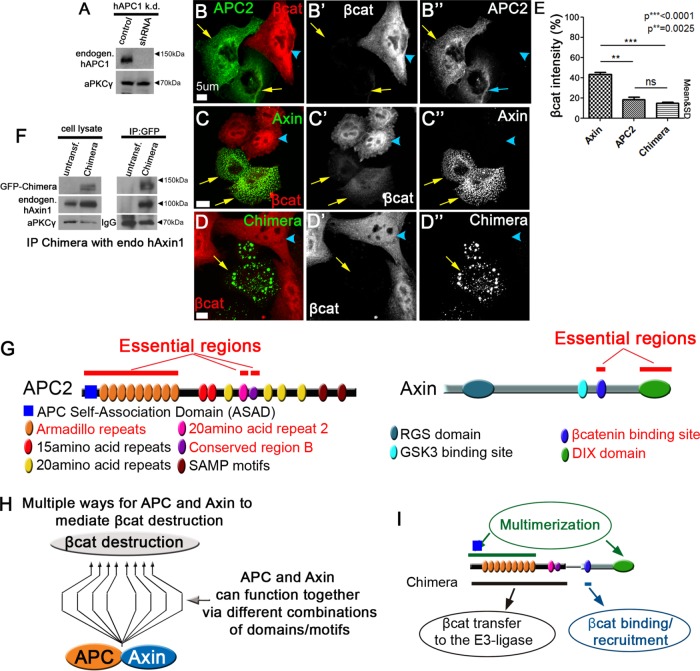FIGURE 7:
High levels of the truncated endogenous APC1 are not essential for function of the Chimera and new models of the destruction complex and its key functions. (A) Immunoblot assessing level of knockdown in SW480 cells stably transduced with shRNA targeting the endogenous truncated human APC1. aPKC serves as a loading control; representative of three experiments. (B–D) SW480 cells stably transduced with shRNA targeting the endogenous truncated human APC1 and then transfected with the indicated GFP-tagged constructs. Arrows, transfected cells; arrowheads, untransfected cells. (E) Quantification, βcat fluorescence intensity in cells like those in B–D. Constructs are indicated. Ten cells each in three independent experiments. Student’s t test was used. (F) The Chimera coimmunoprecipitates endogenous human Axin. Left, cell lysates from cells expressing the indicated constructs. aPKC serves as a loading control. Right, anti-GFP immunoprecipitates, bringing down the GFP-tagged-Chimera. Bottom, effectiveness of antibody pull down. (G) Essential regions of APC2 and Axin. (H) APC and Axin can use different combinations of domains/motifs to secure low levels of βcat. The nature of the combination defines the efficiency of the complex. (I) The Chimera helps define all the essential functions of the APC:Axin destruction complex.

